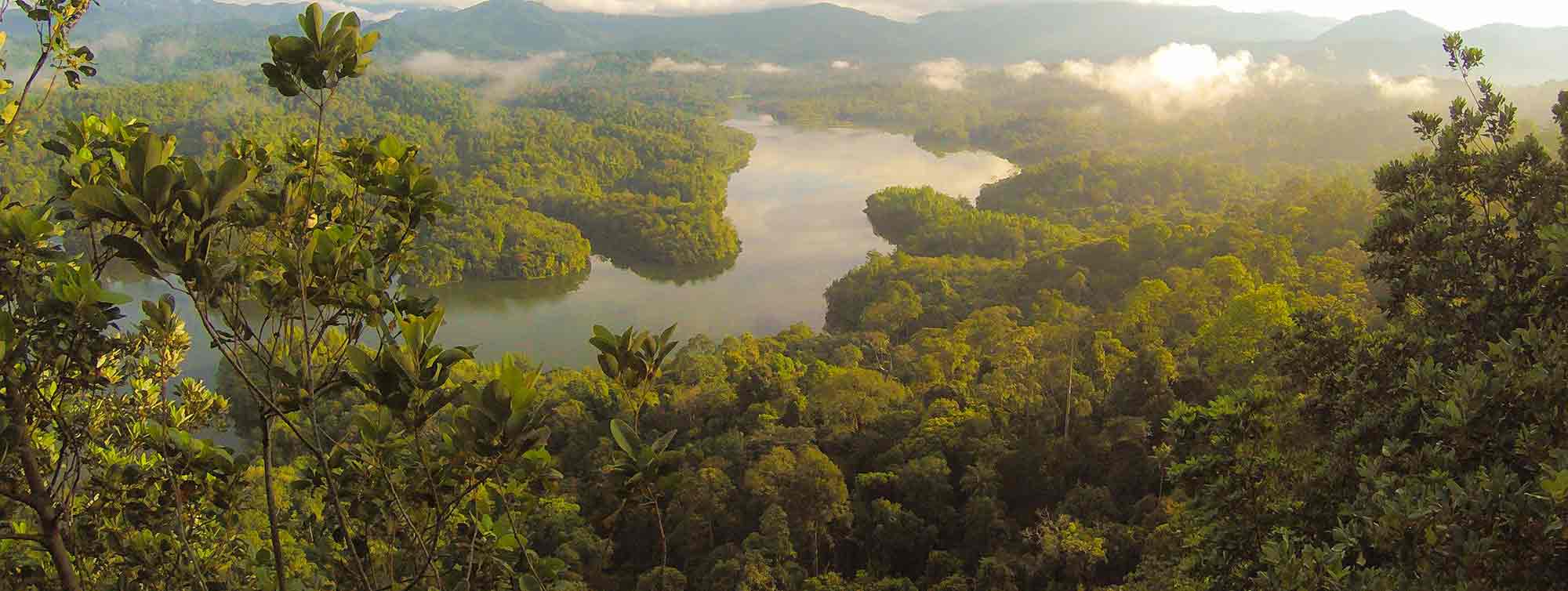428 Resources
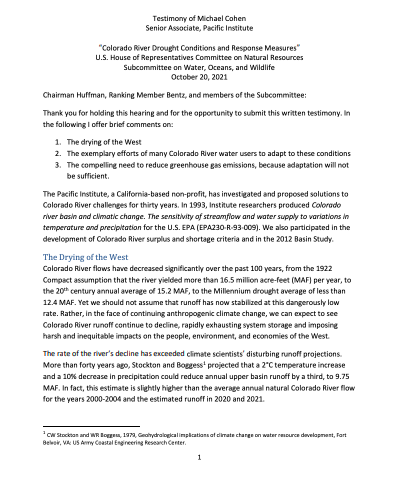
Testimony on Colorado River Drought Conditions and Response Measures to the U.S. House of Representatives Committee on Natural Resources Subcommittee on Water, Oceans, and Wildlife
October 20, 2021 | publication
Pacific Institute Senior Researcher Michael Cohen submitted written testimony to the U.S. House of Representatives Committee on Natural Resources Subcommittee on Water, Oceans, and Wildlife for their October 20, 2021 hearing on drought conditions in the Colorado River Basin and potential response measures.
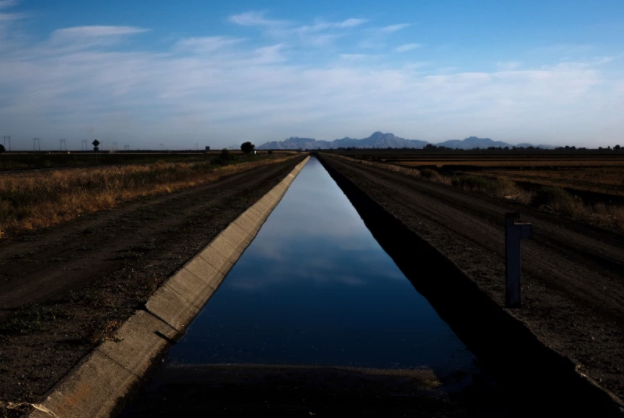
Op-Ed: Happy New Water Year — Californians Have to Face Some Difficult Wet Season Truths
October 4, 2021 | publication
Happy New Water Year. For those of us who work on California water challenges, the start of the new year isn’t Jan. 1; it’s Oct. 1, the official beginning of the state’s wet season.
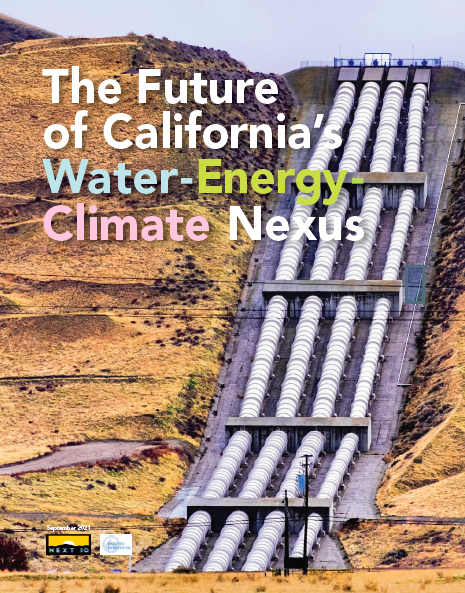
The Future of California’s Water-Energy-Climate Nexus
September 9, 2021 | publication
Water and energy are inextricably linked in California and, as one resource faces constraints or challenges, so does the other. With the state looking to both reach its climate change goals and decarbonize its economy through a transition to 100 percent clean energy, water will play an integral role.
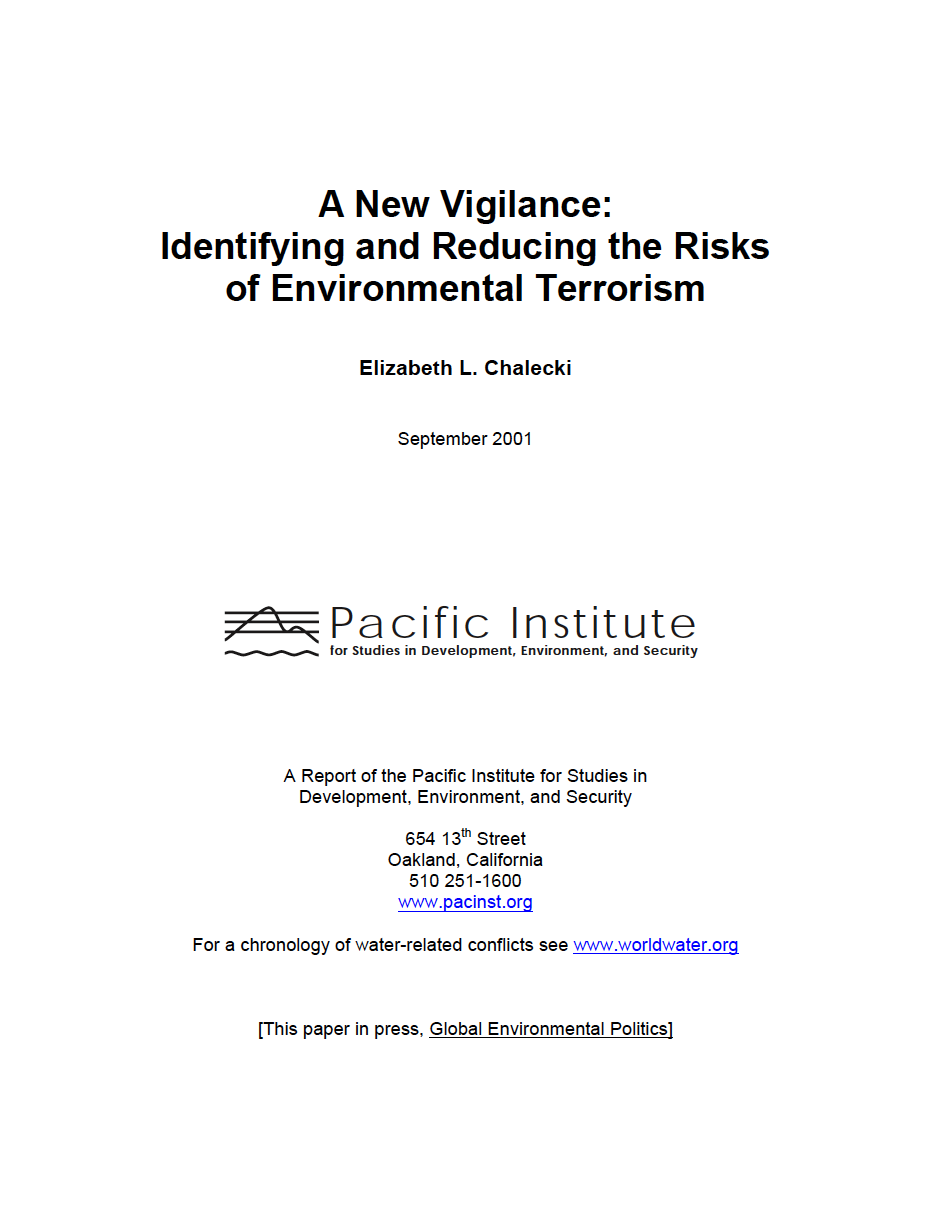
A New Vigilance: Identifying and Reducing the Risks of Environmental Terrorism
September 1, 2021 | publication
Environmental terrorism is an old type of conflict with a new face. Large, costly wars
between two or more states have become less prevalent over the past 50 years, and with the end
of the Cold War and the demise of the Soviet Union, there has been no bipolar superpower
standoff to suppress the many ethnic, religious, and multipolar political and cultural tensions that
motivate terrorist actions.

Water Resilience Assessment Framework
August 24, 2021 | publication
Climate change is driving many types of water challenges, including water scarcity and abundance, worsening water quality, and shifts in timing of the hydrologic cycle. Shocks and stresses affect the resilience of water systems and the stakeholders that rely on them. Specific guidance on how to understand system resilience and measure systematic changes and intervening actions can ensure a more resilient future for all.
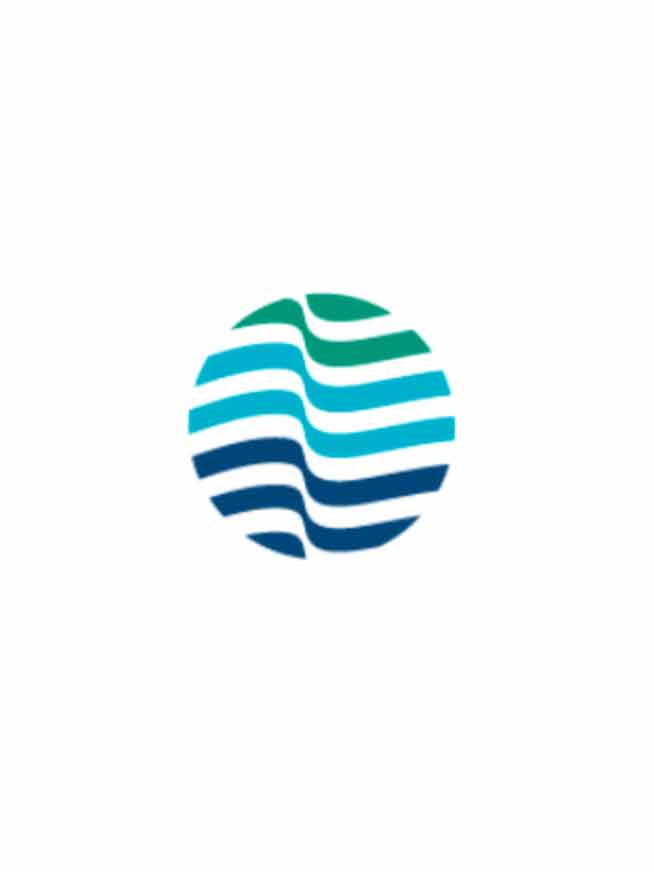
Comments on the California Public Utilities Commission Amended Scope for a Low Income Water Rates Assistance Program
August 11, 2021 | publication
This letter from the Center for Accessible Technology; Pacific Institute for Studies in Development, Environment, and Security; Natural Resources Defense Council; The Environmental Justice Coalition for Water; Community Water Center; and Leadership Counsel for Justice and Accountability (collectively the Joint Advocates) contains comments on the California Public Utilities Commission Amended Scope for a Low Income Water Rates Assistance Program.

Op-Ed: Dying from the Heat
July 2, 2021 | publication
No one wants to be a statistic in a climate disaster—an anonymous entry in a dataset of extreme events. But sometimes things sneak up on you. A couple of weeks ago, during one of the extraordinary and severe heat events striking western North America, I almost suffered from heat stroke.
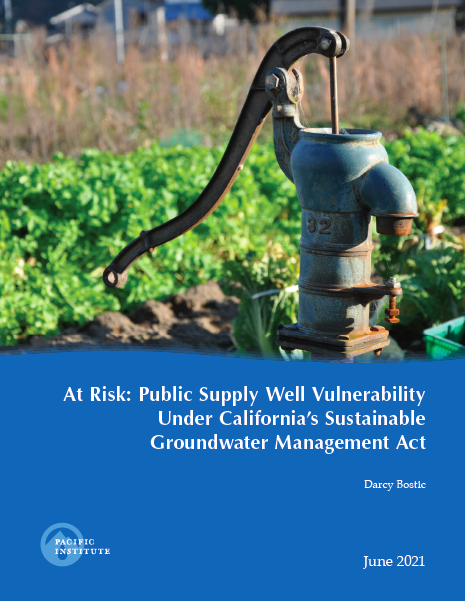
At Risk: Public Supply Well Vulnerability Under California’s Sustainable Groundwater Management Act
June 21, 2021 | publication
Community water systems in California’s San Joaquin Valley face a host of challenges that threaten the safety and reliability of drinking water, including pollution, periodic drought, and chronic groundwater overdraft. Moreover, shallow wells, some of which serve community water systems, are vulnerable to short-term and chronic declines in groundwater levels. For example, during the 2012-2016 drought, many domestic wells and some public supply wells went dry.

Stacked Incentives: Co-Funding Water Customer Incentive Programs
June 8, 2021 | publication
Water utilities throughout the United States offer customer incentives to motivate action and foster engagement with their customers. These incentive programs can take many forms, from rebates for high-efficiency fixtures and appliances to technical assistance for installing cisterns and rain gardens.
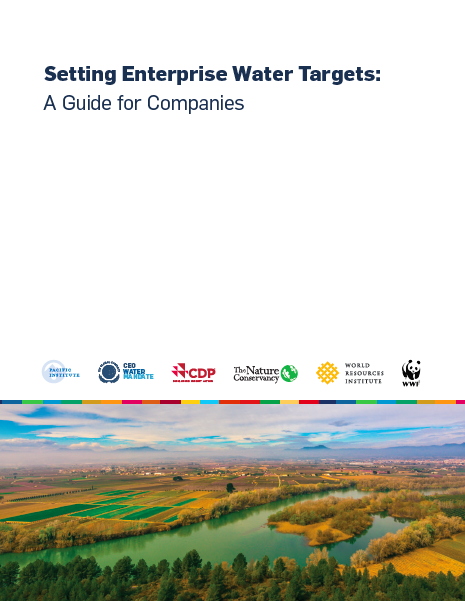
Setting Enterprise Water Targets: A Guide for Companies
May 24, 2021 | publication
The complexity of global water challenges requires meaningful action across sectors, including the business sector. A critical aspect of business engagement in successful water stewardship is setting water targets that address the shared water challenges in the water basins where a company operates, sources, and provides goods and services, and that enable actions that reduce or eliminate the associated water risks.
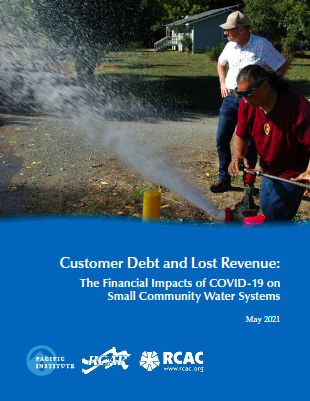
Customer Debt and Declining Revenues: The Financial Impacts of COVID-19 on Small Community Water Systems
May 13, 2021 | publication
More than 45,000 small community water systems exist in the United States. These small community water systems, defined as those serving fewer than 10,000 people, are distributed across the country. Altogether they serve 53 million people across rural and urban settings, on Tribal reservations, in the midst of huge metropolises, and in growing communities.
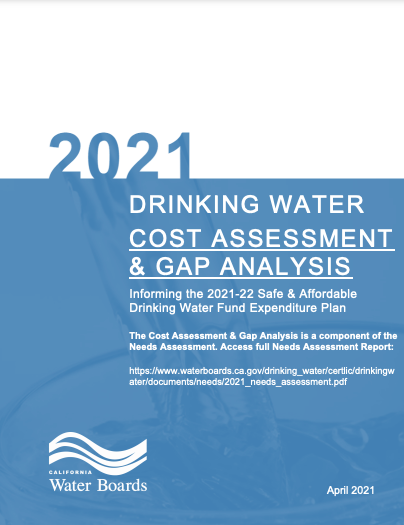
Drinking Water Cost Assessment & Gap Analysis
April 30, 2021 | publication
In 2012, California’s Human Right to Water was passed, calling for safe, clean, affordable, and accessible water for all citizens. Then in 2016, the California State Water Resources Control Board (State Water Board) adopted a Human Right to Water Resolution, making the Human Right to Water a primary consideration and priority across its programs.

Op-Ed: Yes, California is in a Drought — Even if Officials Aren’t Saying it out Loud
April 16, 2021 | publication
California is suffering from severe drought again. This winter produced water conditions far below normal for the second year in a row, the eighth year in the last 10, the 14th year in the last 20. Los Angeles has had 39% of normal precipitation; San Diego, only 30%; San Francisco, 37%; Sacramento, less than 40%.
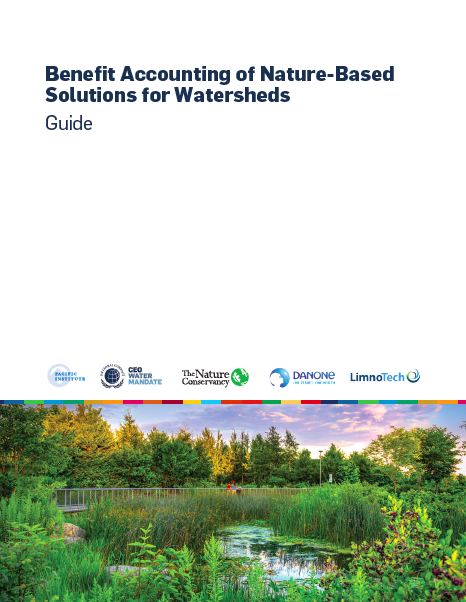
Benefit Accounting of Nature-Based Solutions for Watersheds: Guide
March 4, 2021 | publication
Nature-based solutions use or mimic natural processes to meet societal and environmental needs. They can be used to restore, manage, or protect water resources while also increasing biodiversity and providing additional social and economic benefits. Yet there is no standardized method to identify, estimate, and monitor the benefits that nature-based solutions can provide, making it hard to build the case for investments in these solutions.
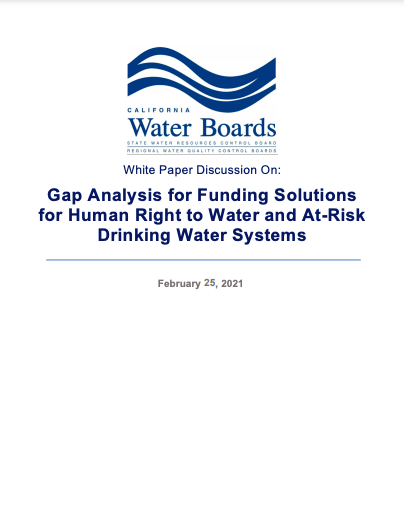
Gap Analysis for Funding Solutions for Human Right to Water and At-Risk Drinking Water Systems
February 25, 2021 | publication
In 2012, California’s Human Right to Water was passed, calling for safe, clean, affordable, and accessible water for all citizens. Then in 2016, the California State Water Resources Control Board (State Water Board) adopted a Human Right to Water Resolution, making the Human Right to Water a primary consideration and priority across its programs.
Page 4 of 29
From the Blog
- Oct 24, 2025
- Building Momentum for Corporate Water Stewardship: CEO Water Mandate and Water Resilience Coalition Participation at New York Climate Week and UN General Assembly 80
- Sep 29, 2025
- California Water Action Collaborative Celebrates 10 Years of Impact
- Apr 22, 2025
- The Business Case for Investing in Nature: From Novel to the New Normal
- Mar 21, 2025
- World Water Day 2025: Pacific Institute Reaffirms its Commitment to Water Resilience
- Feb 27, 2025
- The Growing Threat of Catastrophic Flooding in Rural America


